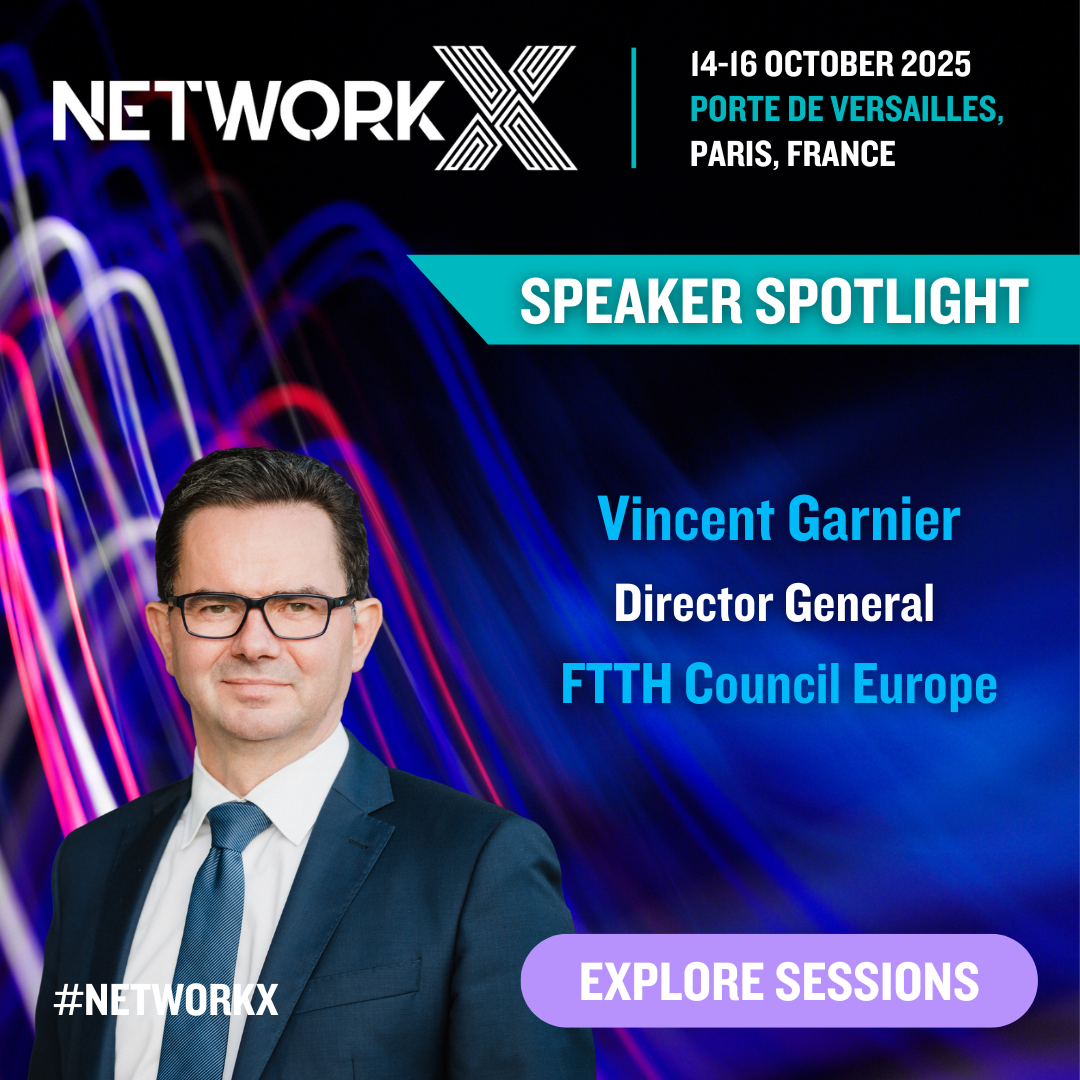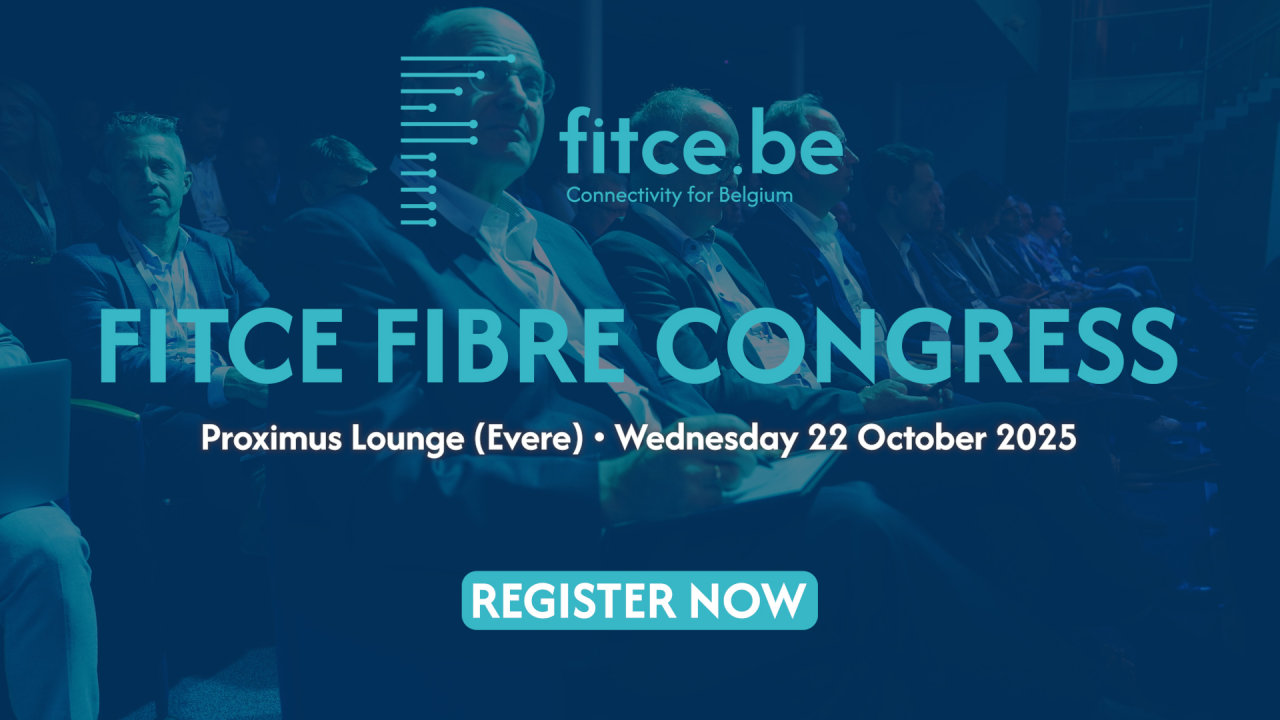Click here if you are having trouble viewing this message.
|
|
|
|
|
|
October 2025 Edition
|
- News from our members
- Telecom Digest:
- German Government Launches "Das beste Internet" Campaign to Boost Fibre Take-Up: BMDS
- Poland Begins Public Consultations on Gigabit Infrastructure Act Implementation: Ministry of Digital Affairs
- French Government to Offer Grants Up to €1,200 for Difficult Fibre Connections: French government
- Spanish Fibre Adoption Soars, Reaching 90% of Fixed Broadband Lines”: CNMC
- Over 93% of Portuguese Internet Users Have Ultra-Fast Broadband: Anacom
- Finland Exceeds Fibre Targets, Fueled by Record Investments and EU Funding: European Commission
- CEE Leads EU in Fibre Coverage, But Faces Adoption Gap
- Next events from the FTTH Council Europe
|
NEWS FROM OUR MEMBERS
|
|
|
|
Hexagon: Getting Fiber-to-the-Home (FTTH) Deployment Right
In today’s telecom market, Fiber-to-the-Home (FTTH) isn’t just a network upgrade. It’s a fundamental shift toward long-term survival. But why do so many deployments fail to deliver? Discover why fiber projects fall short, what separates successful rollouts from costly delays and how operators can turn FTTH into a long-term competitive advantage. Click here to learn more.
|
|
|
|
Icotera: Fibre Termination choices that define your network's scalability and ROI
Choosing the right fibre termination method is crucial for scalability and ROI. Learn how one-box vs. two-box solutions and PON vs. Point-to-Point technologies impact your network's future-proofing and cost-efficiency. Click here to learn more.
|
|
|
|
Incognito: No Device Left Behind: How to Maximize the Value of Fibre Investments
As fibre networks grow, a diverse and complex device landscape challenges service providers. A unified device management infrastructure with centralized orchestration is essential to unlock fibre's full value-enabling seamless integration of legacy and new devices to boost revenue, streamline operations, and exceed customer expectations. Click here to read more.
|
|
|
|
Open Fibre: Fiber Optic vs. xDSL Technologies: What Are the Differences?
Speed, stability, and reliability: three elements that make the difference when comparing internet connections. Between xDSL technology and the FTTH fiber network, only the latter provides the infrastructure that enables innovation and drives digital transformation. Read the full analysis on Open Fiber’s website.
|
|
|
|
Technetix: Zero-dig telecoms: smart upgrades that don’t cost the Earth
But the inconvenience of telecoms-related civil works could be a thing of the past. Zero-dig methods offer quicker, cleaner, and more cost-effective network upgrade and expansion. Click here to read more. Content access password: ZERODIG
|
|
|
|
Telenco: When FTTH meet Fiber Sensors at GO2S 2026
GO2S 2026 conference , organized by ARUFOG, will be held in Lyon (Feb 3–4, 2026).. Focus on fiber optic sensors using telecom infrastructures including FTTH. Topics include resilience experiments and network valorization where FTTH central offices house sensor systems and cables become chains of thousands of sensors. Learn more about GO2S 2026 conference.
|
|
|
|
Calix:Why 50G-PON Is the Only Future-Proof Network Investment for BSPs
Broadband service providers face a critical choice: 25G-PON or 50G-PON. With ITU-standard backing, unmatched capacity, and vendor momentum, 50G-PON minimizes risk and maximizes ROI. It’s the only solution ready to support next-gen experiences, network convergence, and evolving subscriber demands. Click here to learn more.
|
|
|
|
EXFO: Hollow Core Fiber: Advancing Speed and Precision in Modern FTTH Networks
Discover how hollow core fiber elevates FTTH network performance. This article explores its unique advantages for latency-sensitive applications, unlocking new reliability and efficiency for the evolving fiber landscape. Read more about Hollow Core Fibre.
|
|
|
|
|
|
German Government Launches "Das beste Internet" Campaign to Boost Fibre Take-Up
The German Federal Ministry for Digital Transformation and Government Modernisation (BMDS) has initiated a new campaign, "Das beste Internet" (The Best Internet), to promote the benefits of a fibre-optic connection. The goal is to encourage tenants, homeowners, and businesses to utilize the existing fibre infrastructure.
According to State Secretary Markus Richter, increasing demand will help accelerate the country's fibre network expansion. Germany has seen an increase in fibre deployment in the first half of 2025, but it still lags behind other European nations in both Very High-Capacity Network (VHCN) coverage and direct Fibre-to-the-Premises (FTTP) connections, particularly in rural areas. This campaign aims to close that gap by boosting consumer interest and demand for high-speed fibre service.
|
Poland Begins Public Consultations on Gigabit Infrastructure Act Implementation
Poland's Ministry of Digitisation has started public consultations on draft amendments to the Law on Telecommunications to support the roll-out of gigabit broadband networks. The changes are designed to improve access to technical infrastructure, especially in sparsely populated areas. The planned legislation implements the Gigabit Infrastructure Act (GIA) passed by the European Union in 2024. Public comments can be submitted until 17 October.
|
French Government to Offer Grants Up to €1,200 for Difficult Fibre Connections
The French government has implemented a new pilot scheme to financially support households and small and medium-sized enterprises (SMEs) with "complex" fibre installations. The initiative, part of a larger EUR 16,1 million program, will provide grants ranging from EUR 400 to EUR 1.200 for installations on private property that fall outside the standard work typically performed by fibre operators. The pilot targets 3.142 municipalities slated for a near-term copper network switch-off and is active from September 2025 to May 2027. This move is part of France's ongoing efforts to ensure nationwide access to high-speed broadband and aligns with European digital connectivity goals. It addresses the challenges of last-mile connectivity in areas with difficult terrain or infrastructure, aiming to accelerate the transition from copper to fibre.
|
Spanish Fibre Adoption Soars, Reaching 90% of Fixed Broadband Lines
In Spain, as per the national regulator CNMC, the adoption of fibre-to-the-home (FTTH) continues to surge, with total active connections reaching 17,3 million in June 2025. This represents a significant increase of 1,1 million lines over the past year, as FTTH now accounts for over 90% of Spain's 19,18 million fixed broadband connections. The growth of FTTH is largely fueled by a widespread migration away from legacy technologies, with DSL connections dropping to just 4.000.
The competitive landscape is dynamic. The MasOrange group (Masmovil and Orange) leads the market with a 37% share, despite a slight loss of lines. Telefonica holds a 31% share, while Vodafone Spain (Zegona) has 14%. The biggest gainer was Digi Spain, which increased its share to 12% by adding 41.000 lines through porting. This rapid growth highlights the success of alternative providers in Spain's highly developed and competitive fibre market.
|
Over 93% of Portuguese Internet Users Have Ultra-Fast Broadband
As per the national regulator, Anacom, at the end of the second quarter of 2025, Portugal had 3,8 million residential customers for fixed high-speed internet, with an 85,8%take-up rate. High-speed networks covered 95,6% of dwellings, a 1,2-percentage point increase from the previous year.FTTH connections are dominant, with 6,1 million homes connected, resulting in 94,7% coverage. Seven out of ten new customers chose this technology. Over 93% of fixed broadband accesses are ultra-fast (≥100 Mb/s), and 29% are gigabit-speed (≥1 Gb/s).
While national progress is strong, with Portugal ranking fourth in the EU for ultra-fast broadband proportion, regional disparities exist. Coverage in the Centre and Alentejo is below the national average. Overall, 73,6% of connected dwellings are active users, but FTTH take-up rates vary, with Madeira reporting a rate below 40%.
|
Finland Exceeds Fibre Targets, Fueled by Record Investments and EU Funding
As part of its recovery and resilience plan, Finland is investing €32 million to deploy high-speed broadband infrastructure and advance the country's digital transition. Finland's telecommunications sector is experiencing a significant shift in investment, with a strong focus on expanding fixed networks. In 2024, Finnish telecom companies increased their material investments by 11% to €791 million, driven by a 29% surge in fixed network spending, which reached a record high of €497 million. This boom is primarily due to the rapid deployment of fibre optics across the country.
This private sector investment is complemented by public funding initiatives aimed at boosting connectivity in non-commercial areas. A government-backed fibre expansion program, funded by the EU's Recovery and Resilience Facility, has successfully connected over 18.000 customers, exceeding its initial target of 16.000. So far, 13 of 36 projects have been completed, with the rest expected to be finished by the end of 2025. This €27 million initiative, managed by the Finnish Transport and Communications Agency (Traficom), targets sparsely populated regions where fibre rollout would not be commercially viable.
|
CEE Leads EU in Fibre Coverage, But Faces Adoption Gap
As discussed in occasion of the recent FTTH Congress CEE 2025, the Central and Eastern Europe (region is rapidly closing its historic digital divide, with many countries now exceeding the EU average for fibre-to-the-home (FTTH) coverage. The region has become a key player in Europe's digital future, with countries like Romania leading in coverage at over 93%. As stated by Vincent Garnier, Director General of the FTTH Council Europe, in an interview by Fibre Systems, “The regulatory framework and government support will continue to play a decisive role in fibre deployment across Central and Eastern Europe”. Other nations, including Estonia and Lithuania, also boast strong fibre availability, demonstrating the positive impact of proactive policies and competitive markets.
However, despite impressive infrastructure, the adoption of fibre services varies widely. While Romania leads Europe with an 82% uptake rate, countries like Poland and the Czech Republic face challenges in converting this infrastructure into active demand. Adoption is more than a business goal, Vincent further elaborated in an article published on SDX Central, it's essential for digital inclusion, economic growth, and efficient public services. As a matter of fact, targeted policies, such as awareness campaigns, subsidies, and a clear regulatory framework, are needed to encourage more people to switch to fibre.
|
NEXT EVENTS
|
|
|

|
Join the Fixed Line Technology Spotlight Panel at Network X 2025 on 14 October, 10:00-11:00 (CET), live from Porte de Versailles, Paris, and online. Organized by Informa - Telco Transformation, this 60-minute session will gather industry leaders to discuss the future of fixed-line innovation and broadband connectivity. Vincent Garnier, Director General of the FTTH Council Europe, will share operator insights on strategies shaping Europe’s broadband landscape. Attendees will explore practical applications, market readiness, and emerging trends driving technological advancement across the sector. Don’t miss this opportunity to engage with experts defining the next era of connectivity. Click here to learn more!
|

|
Join the FITCE Fibre Congress on 22 October 2025, from 12:00 to 21:00, at the Proximus Lounge in Brussels-Belgium’s premier event dedicated to the nation’s fibre landscape. Organized by FITCE.be, the congress will explore market developments, deployment trends, regulatory updates, and innovations shaping Belgium’s strong fibre sector. At 13:00-14:00, Vincent Garnier, Director General of the FTTH Council Europe, will deliver a keynote on sustainability, addressing how fibre networks can drive environmental responsibility and energy efficiency. Attendees will gain insights into ESG integration, sustainable network strategies, and future opportunities for a greener, more resilient digital ecosystem. Visit the website to learn more.
|

|
Europe’s leading fibre optic event, the FTTH Conference 2026, is scheduled for April 14-16 at ExCeL London, UK. Over three days, the conference will convene more than 3,000 industry leaders from the FTTH value chain to discuss strategic insights, drive business development, and facilitate high-level networking. Attendees will explore the latest innovations and emerging trends, connecting with key decision-makers to help shape the future of fiber in Europe. This premier event offers an unparalleled opportunity for business growth and a deeper understanding of the fiber industry. Stay tuned for more details.
|
|
|
#FibreHorizon is the FTTH Council Europe's monthly selection
of digital and fibre-related news.
For more information, check our website or contact us.
|
The FTTH Council is committed to being compliant with the EU's GDPR. Take 1 minute & keep receiving our news on the fibre world and the FTTH Conference!
|
|
Click Here
|
|
|
|




|



|
About Us
The FTTH Council Europe is an industry organisation with a mission to advance ubiquitous full fibre-based connectivity to the whole of Europe.
Our vision is that fibre connectivity will transform and enhance the way we live, do business and interact, connecting everyone and everything, everywhere. Fibre is the future-proof, climate-friendly infrastructure which is a crucial prerequisite for safeguarding Europe’s global competitiveness while playing a leading global role in sustainability.
The FTTH Council Europe consists of more than 170 member companies.
|
Click here to unsubscribe or to change your Subscription Preferences.
|
|
Contact Us:
Secretariat
Communications & Public Affairs
FTTH Council Europe ASBL
4 Rue de la Presse
1000 Brussels, Belgium
www.ftthcouncil.eu
You are receiving this email because you opted into the FTTH Council Europe database either by registering on the FTTH Council Europe website or through giving consent to a FTTH Council Europe representative
Copyright © 2025 FTTH Council Europe ASBL, All rights reserved.
|
|
|
|
|